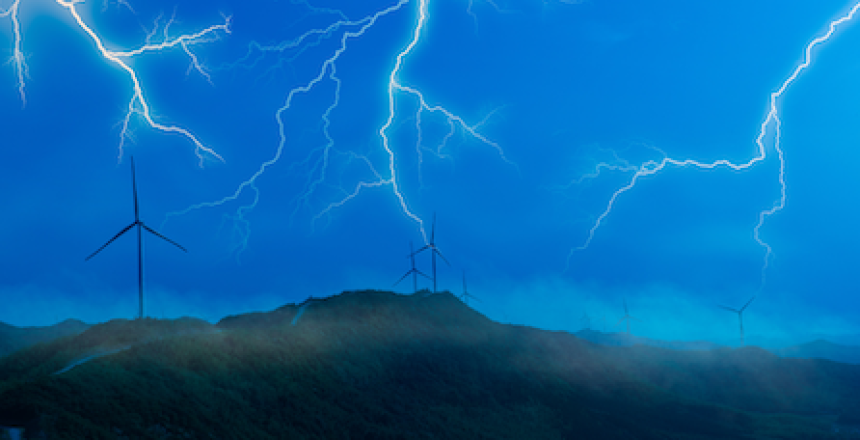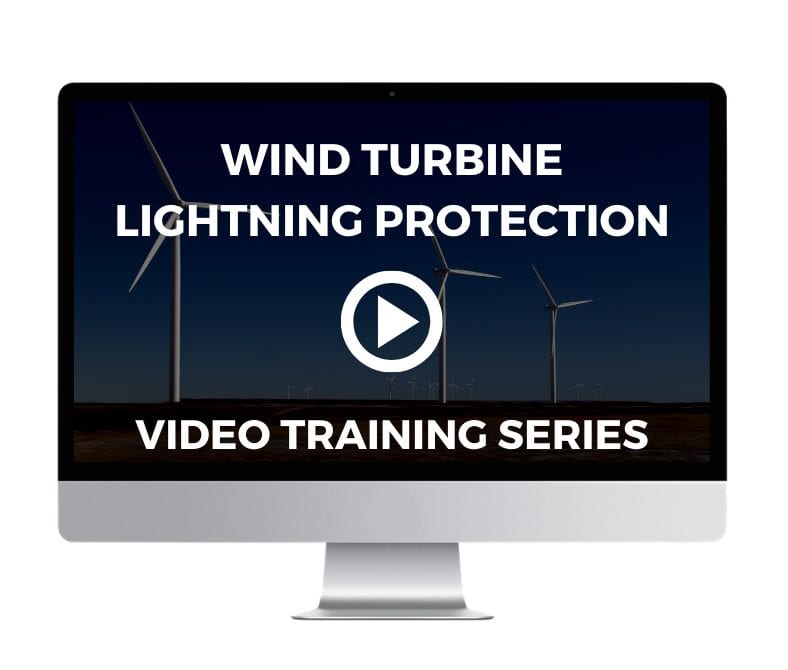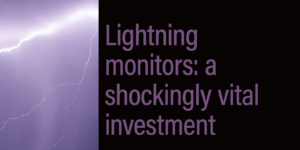The IEC 61400-24 Lightning Protection specification is in the process of being amended. The period for public comment runs through November 2, 2023. The proposed update would add more instructions and information for Lightning Detection and Measurement Systems, which sounds like a good idea. But looking more closely at the proposed amendment, it’s pretty clear that the lighting monitor systems being recommended in the proposed amendment would not offer any new or actionable data for the wind industry.
Lightning monitors vary in complexity and cost, ranging from a few thousand dollars to more than $10K per turbine. Essentially mandating expensive lightning monitoring systems would increase the levelized cost of energy (LCOE).
What’s at stake?
If IEC 61400-24 Annex L is approved in a member vote, owners and operators will be strongly encouraged to instrument every wind turbine to collect data that the OEMs could use to improve future wind turbine models. The instrumentation, at a cost of between $3,000 to $10,000 per turbine, could be helpful in future product development, but none of the data collected is expected to provide actionable information for operators, and the data will not improve lightning protection.
Lightning expert Allen Hall and Weather Guard Lightning Tech Chief Commercial Officer, Joel Saxum, reviewed the proposed changes in depth and offer several cost-effective alternatives for wind owners and operators who want to improve lightning protection and reduce the LCOE.
Find the proposed amendment here
Register your public comment with IEC here
What are IEC Standards?
IEC standards are effectively technical specifications for the industry. In virtually any legal case or insurance claim, liability is reviewed based on adherence to the IEC specifications.
Current IEC lighting protection standards for wind turbines were put in place in the early 2000s and updated in 2019.
Why was Annex L proposed? And what can I do about it?
That’s a good question. Listen to the podcast for some insight. To become a public reviewer for IEC specifications, register here: https://www.iec.ch/ords/f?p=109:105:0
How would the proposed data collection help improve lightning protection?
In short, it almost certainly won’t.
“The proposed Annex L just says, you need to go and collect all this data,” Hall explained. “The document leads you to believe that with all this data that could be collected, there would be some actionable information that engineers could use to then redesign or create this new lightning protection system for the next generation of blades.”
“But the information they’re collecting doesn’t do that.”
What the IEC spec and the monitoring systems do is measure the current flow of a lightning strike. And while there are different parts of that lightning current, it’s all current flow. Measuring current flow is good, but there has been no correlation between the type of current going into a blade and exterior blade lightning damage.
“The two not do not sync up because we are looking at the wrong phase of the lightning event,” Hall said.
When and how does lightning damage occur?
There are two phases to watch: attachment and conduction. In the IEC spec, there are two corresponding parts to testing: There’s a high voltage test and then a high current test.
The high voltage test looks at the attachment phase of a lightning event, where the blade is reaching out to the sky and it’s connecting with this downward leader from the cloud and they connect.
Then there’s a conduction phase, where the current flow starts.
The proposed update to the IEC spec update would measure the current flow part, but not the high voltage part. Importantly, the high voltage part is where punctures occur, and that’s where we don’t have a lot of data.
We have very little data actually from the field on that, because it’s difficult to do particularly once the blades are in service.
What this proposed Annex L would do is instrument turbines so we can learn from this data and potentially make design changes in the future.
That’s not a standard, that’s a data collection project.
What are the alternatives?
Asking owners and operators to instrument their turbines so that they can get data to fix products in the future isn’t how standards should work.
The fact is that we could get that information right now, without instrumenting every turbine. Listen to find out how we can get the data we need.
Operators need to know that they’ve taken a strike, where, and to look to see if there’s damage. The other action is to prevent the damage in the first place.
Lightning strikes happen to wind turbines way more often than people think.
There’s a general consensus, which comes from the aviation industry, that wind turbines get struck roughly once a year. Per turbine. That’s an airplane number. That’s where that number comes from. It’s not based on real lightning data for wind turbines.

Thanks for reading!
We hadn’t planned on having this discussion a week ago because we just weren’t that in tune with the IEC update, and then we got bombarded with requests to take a look at it and provide some comment on it. If you have questions, reach us at uptime@wglightning.com.
Use this link to send your comments and questions to the IEC: https://www.iec.ch/ords/f?p=109:105:0
We’d be glad to answer your questions here, on our social feeds and in future podcasts, but as this IEC amendment goes forward and a vote is coming up, our opinion is that as the proposal is written, it would be an expensive, research-intensive initiative that will increase costs without improving lightning protection directly. Please contact the IEC with your questions and concerns before the vote is taken.
Listen to the discussion for 3 specific, cost-effective ways to identify where your turbines have been struck, whether they’ve sustained damage, and how to improve your lightning protection.






